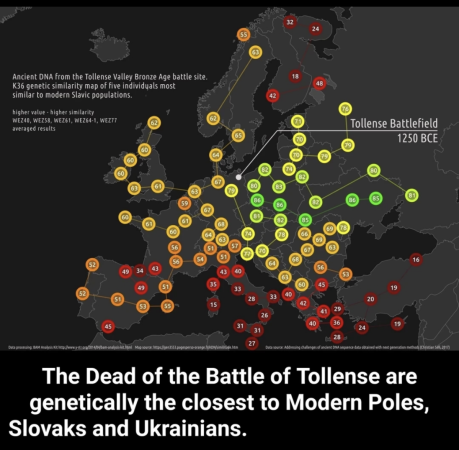catosicarius
Junior Member
- Messages
- 4
- Reaction score
- 0
- Points
- 0
- Y-DNA haplogroup
- I2
So I mean, most West/East Slavs are different to South Slavs. Wondering why that is?
I have read that there was a tribe called the Sclavenians which conquered and ravaged the whole of the Balkans peninsula. Could they just have been dominant I2a? Why is there this big genetic difference between north/south? I mean I'm aware Slavs aren't a "race" rather a culture/language. But who were the I2a Slavs before Slavs existed? Were they Dacians? The Balkan Slavs have many similar haplogroups to Romanians, moreso than to Russians and Poles.
I've also heard crazy theories about I2 coming from Celts/Gauls, this sounds wild to me, any credence to it?
Or, if im understanding things about the haplogroup correctly, were the I2a Slavs just a minor tribe that had a population explosion and went south?
I have read that there was a tribe called the Sclavenians which conquered and ravaged the whole of the Balkans peninsula. Could they just have been dominant I2a? Why is there this big genetic difference between north/south? I mean I'm aware Slavs aren't a "race" rather a culture/language. But who were the I2a Slavs before Slavs existed? Were they Dacians? The Balkan Slavs have many similar haplogroups to Romanians, moreso than to Russians and Poles.
I've also heard crazy theories about I2 coming from Celts/Gauls, this sounds wild to me, any credence to it?
Or, if im understanding things about the haplogroup correctly, were the I2a Slavs just a minor tribe that had a population explosion and went south?



